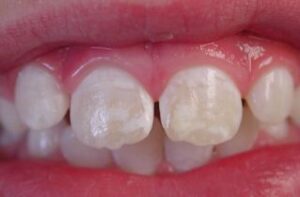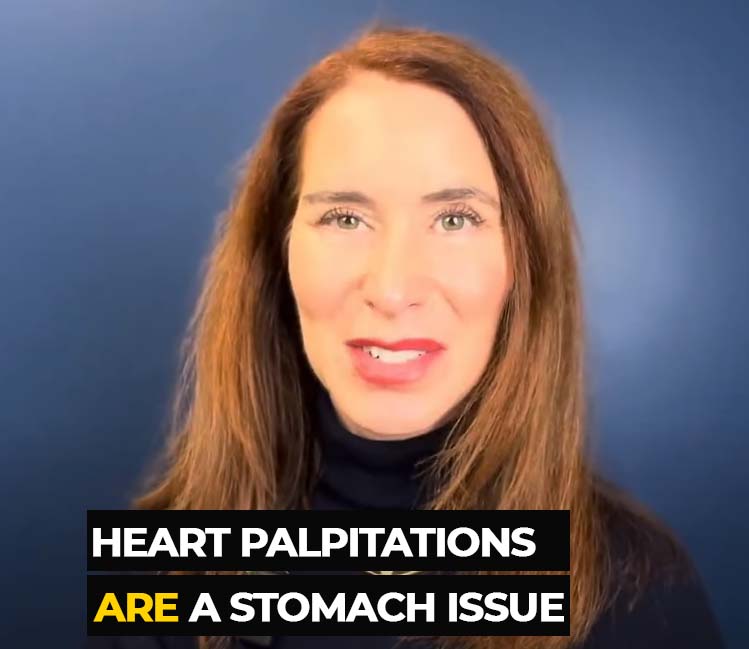White Spots on Teeth Could Mean Celiac Disease
Look at your teeth and your children’s. Dental enamel defects are present in 89% of people with celiac disease. Learn more from a doctor and author.
Your Teeth could be Telling you that you have a Disease
What you will learn about
 White spots, discolorations, and undersized teeth can be unsightly, and most adults with the financial ability utilize crowns or veneers to solve the aesthetics of the problem.
White spots, discolorations, and undersized teeth can be unsightly, and most adults with the financial ability utilize crowns or veneers to solve the aesthetics of the problem.
While a pretty white covering might make the patient happier when they look in the mirror, ignoring the root cause of those enamel defects could shorten your life! Sound dramatic? It’s not if you realize those defects could indicate undiagnosed celiac disease.
Celiac disease, affecting 1 to 4% of the population, is an autoimmune disease known to shorten the lifespan of those affected. Plus, as an autoimmune disease, having celiac increases your risk of developing other autoimmune diseases such as multiple sclerosis, eczema, rheumatoid arthritis, and osteoporosis. Cancer incidence also increases with celiac disease.
Almost 90% of Celiacs have Tooth Enamel Defects
Children who have enamel defects are assumed to have developed the problem from fluoride, a mother who took tetracycline (an antibiotic), or from an illness early on in childhood. While those are all possible, it is important to realize that celiac disease is highly associated with dental enamel defects.
According to a reference book, ‘up to 89%’ of people with celiac disease exhibit enamel problems – that is a huge percentage. Everything from white spots to undersized teeth to yellowing teeth to teeth with grooves or pitting on permanent teeth should all raise a red flag for potential celiac disease. The longer a patient has celiac disease, the more likely they will suffer severe health issues.
Therefore, it is critical that parents and dentists alike appreciate what such tooth disorders can signal. It goes far beyond appearance. A collaborative study between a dentist, Ted Malahias, DDS, and leading celiac researcher Peter Green, MD revealed that the enamel defects in children most likely occurred due to the onset of the disease while the dental enamel was forming. They concluded that dentists and all physicians, for that matter, increase their education to understand this strong association.
Of course the deficiency of vitamin D and calcium that can occur secondary to celiac disease add ‘insult to injury’ and can well hasten dental cavity formation.
‘Silent’ Celiac Disease could be Expressed only in Your Teeth
Celiac disease can, unfortunately, be silent. A study of 128 adult patients following a gluten-free diet revealed that dental enamel changes in permanent teeth may be the only observable symptoms of otherwise ‘silent’ celiac disease. The sad facts are that we only diagnose 3 to 5% of all Americans suffering from celiac disease. It is an extremely poor diagnosis rate and anything we can do to increase awareness will go a long way to improving the health status of those suffering.
Educate Your Dentist and Doctor
So look at your child’s teeth and your own. Unless you have a very savvy dentist you will likely have to educate him or her about what enamel defects could mean. But please consider showing this post to your dentist.
I guarantee that during the course of their practice they will successfully diagnose someone suffering from celiac disease as a result. The only way we are going to increase awareness is to develop a grassroots movement.
I am committed to increasing awareness of both celiac disease and gluten sensitivity. Please help me. My destination clinic treats patients from across the country and internationally. The good news is that you don’t need to live locally to get treated. If you or someone you care about is not enjoying good health, please contact me for free health analysis.
Ask a Doctor
Have a health concern you'd like to speak with a doctor about? Or just want clarity on a subject? Ask Us!






